ISIS, Korea, World War III and Superbug epics: Fourteen new CMANO scenarios
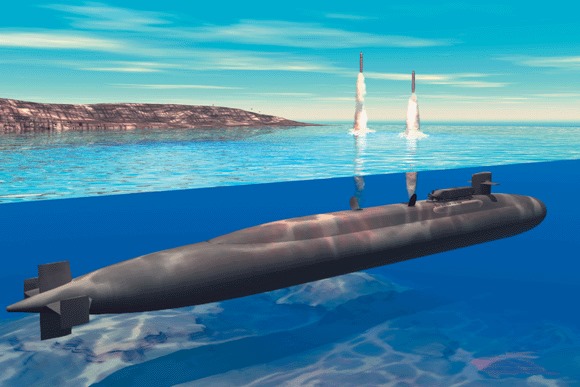 It looks like Command’s scenario authors are crafting new exciting works even on the beach! Miguel Molina has posted a new revision of the community scenario pack, featuring fourteen new scenarios.
It looks like Command’s scenario authors are crafting new exciting works even on the beach! Miguel Molina has posted a new revision of the community scenario pack, featuring fourteen new scenarios.
- Saudi Arabia Crisis – Attack of IS, 2016: The IS terrorists control Yemen and part of Somalia and Saudi Arabia. Western forces are massing on Israel, Oman and Kuwait as a prelude to invasion of Saudi Arabia to counter the IS. But Iranian-backed elements within IS have one more card to play…
- Battle of Yavin, 1980: A plucky, rag-tag, and surprisingly well armed band of rebels has identified a weakness in an Imperial battle station. You’re one of the pilots flying fighter cover for the attack. Good luck!
- Benny’s Sweep, 1958: Pro-Communist rebels operating in the Philippines have seized control of part of the island of Luzon. Worse, the rebels are receiving aid from the Soviet Union, which hopes to trigger a Vietnam-like civil war in the Philippines. The situation is intolerable to the United States, but at the moment other international obligations mean that the only forces available to assist the government of the Philippines is a small task force based around the aircraft carrier Bennington.
- Kitty Comes To Kamchatka (The War That Never Was), 1989: Petropavlovsk is the only major Russian naval base that opens directly to the Pacific. That fact, plus its proximity to Alaska, made it a prime NATO target during the Cold War. This scenario, based upon the book by Michael A. Palmer, examines the ability of a single Carrier Task Force centered on the USS Kitty Hawk to attack and neutralize this important facility.
- Meteors Over Korea, 1952: A fictional raid conducted by Australian forces against the port of Haeju during the Korean War. When Australian forces, flying Gloster Meteors, first encountered North Korean MiG-15s, they suffered significant losses. Following this, the Meteor was used primarily as an attack aircraft rather than as an interceptor. This scenario assumes that no other forces were available to assist the Australians during this mission and that, for this reason, the Meteors from No. 77 squadron were employed both as attack and as escort aircraft.
- Northern Fury 6 – Keflavik Capers, 1994: War started Sunday and Keflavik was one of the first targets, a surprise missile attack which closed the two main runways and destroyed seven aircraft on the ground. You need time to reinforce and get the base onto a real war-footing. You must inflict damage and slow Soviet progress. Critical to success is the evacuation of non essential personnel and civilians.
- Northern Fury 7 – Plug the Gap, 1994: Steaming North as the fourth day of a new global war opens, you are in command of the HMS Invincible Task Group, and are heading into harm’s way! Dawn yesterday saw an amphibious assault around Trondheim. It looks like the Norwegians with the able help of 3 Royal Marine Commando Bde are holding, but pressure from the north is forcing the Norwegian Army to collapse southwards. Narvik fell late yesterday afternoon. STANAVFORLANT is withdrawing in tatters with the remaining surface units of the Norwegian fleet – they are out of it for a bit. Reports from Iceland are vague but it appears that Spetsnaz forces have captured several out-ports and key radar installations have been knocked out. Critical to success is the transport of two parachute battalions to establish initial defences in the Shetland and Faroe Islands.
- Northern Fury 8 – Hold the Line, 1994: You are the commander of the USS Enterprise CVBG, (CVN-65). Due to heightened tensions, your refit/re-fueling was rushed through and completed 8 months ahead of schedule. On the 12th of Feb, while completing your workup trials off of Puerto Rico, you were sent a FLASH message to precede north at best possible speed. Just before midnight last night you received a warning order from CINCLANT informing you of some late developments – including the fall of Iceland. Your orders were to position the TG north east of Newfoundland and prepare for heavy engagement.
- Phoenix of Indochina, 1949: The Japanese ship Hosho was a vital pioneer in naval aviation, being the first ship built as an aircraft carrier. Miraculously surviving World War II, she was historically converted to a transport and then scrapped. In this scenario, the Hosho was given to France as a war prize, and her new owners, faced with a war in Indochina, have wasted no time in putting her to use. Here the Hosho (renamed in a new language that keeps the original meaning) now fights over Haiphong.
- Russian Civil War (Jane’s F/A-18) – Phase I, 2004: Due to severe economic downturns and the collapse of the former Soviet Union, the political and military leadership in Russia has splintered into two discrete factions. The result of these divisions is an armed civil conflict. The political and security interests of NATO members and the western world preclude a return to Soviet-era leadership in post-Soviet Russia. In response to this threat, and to a request for assistance by ‘Blue Russian’ forces, NATO and the United States NCA have dispatched the USS Ronald Reagan Carrier Strike Group to the waters north of the Kola Peninusula. Although overt hostilities have not yet begun against ‘Red Russian’ forces, they are imminent.
- Russian Civil War (Jane’s F/A-18) – Phase II, 2004: During Phase I of the campaign the Reagan Strike Group conducted a systematic attrition of Red Russian air assets and integrated counter-air defenses on the Kola Peninsula. In Phase II, the strike group will perform the function for which it was deployed here: to prevent rebel forces from obtaining and using WMDs or their delivery vehicles.
- Russian Civil War (Jane’s F/A-18) – Phase III, 2004: The USS Ronald Reagan Carrier Strike Group was deployed to the waters north of the Kola Peninusula to defeat the threat of Red Russian forces obtaining WMD’s and their delivery vehicles. During the first two phases of the operation, the strike group rolled back Red Russian integrated air defenses on the Kola Peninsula and conducted operations to destroy and/or deny various WMD assets to Red Russian forces. With Blue Russian forces obtaining the upper hand and rapidly moving north, the strike group intends to accelerate the Red Russian collapse by attacking their logistics lines and forces from the rear, coupled with an amphibious raid by the USMC in order to further demoralize the rebel leadership and perhaps draw forces away from the Blue Russian advance.
- Uncle Mark’s Tutorials #1 – NATO Surface Group vs. Soviet, 1985: World War III has started in 1985, and you are in charge of a small surface action group (SAG). Your job is to hunt Soviet ships and submarines and destroy them before they can get out into the Atlantic ocean, where they could threaten NATO convoys. Your forces consist of three warships–a British destroyer, a Dutch frigate, and a German frigate. You also have three helicopters for scouting the seas ahead of your ships and for hunting submarines.
- Uncle Mark’s Tutorials #2 – English Jets over Uganda, 1973: In 1972, Idi Amin broke diplomatic relations with the UK and nationalized several British companies operating in Uganda. This scenario assumes that following this a series of incidents have led to increased hostilities between Uganda and the UK. The UK has decided that a show of force is necessary. Kenya has provided the UK with access to one of its air bases. You are in command of a strike force formed from detachments from a number of RAF squadrons. You have three basic missions. You are to first cripple the Ugandan air force in the sky and gain air superiority. You are also to fly reconnaissance missions over Entebbe. Finally, you are to conduct air strikes against selected ground targets.
All new scenarios use the v438 versions of the DB3000 and CWDB databases, which are included in the v1.08 upgrade just released.
As always, the community scenario pack is available for download at the WarfareSims download section: http://www.warfaresims.com/?page_id=1876
With the new additions, the number of total released scenarios now stands at 275!
Marching forward: Command v1.08 now available
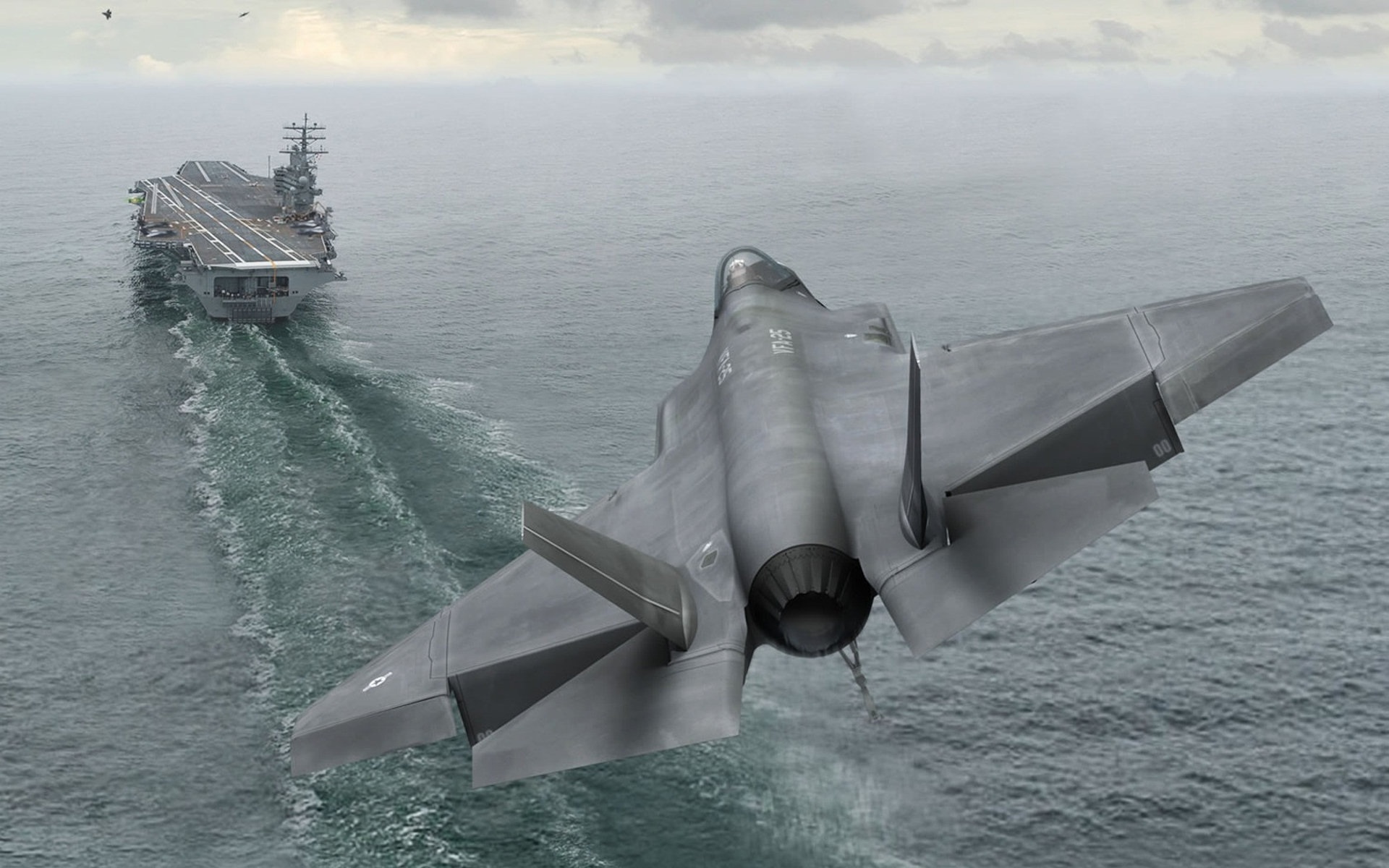 It’s been four months since v1.07, and we’ve been busy as always. After a lengthy public release candidate phase, Command v1.08 is now officially available. Full 20-page changelog is here.
It’s been four months since v1.07, and we’ve been busy as always. After a lengthy public release candidate phase, Command v1.08 is now officially available. Full 20-page changelog is here.
Some of the highlights of the new free update:
* New toys to try out: Anti-torpedo torpedoes and related torpedo-warning systems, new warhead types such as “superfrags”, new weapon types such as “Contact explosive” (for the discerning saboteur or suicide terrorist), a brand-new ship type (Mobile Offshore Base (aka “Battle Island”)), and more.
* User interface enhancements: Players can now observe the engagement arcs of a unit mount, permission-dependent color of targeting vectors, coastline/border fade-out on zoom (as in GE), the manual weapon allocation window can present to the player the “soft” restrictions (WRA/WCS/other doctrine settings), various tweaks to mission editor UI. etc.
* Simulation improvements: Major speed boost on large scenarios, more accurate uncertainty areas for long-range passive detections (SOSUS, ESM etc.), reliable sub battery recharge, improved sub-captain AI on chasing after unreachable targets, snap-up/down limits for AAW guided weapons, side-firing gunships (e.g. AC-130) now manouvering properly, more realistic UNREP transfer rates, speed-dependent aircraft IR signatures (that supercruise may now really cost you if the enemy has decent IRSTs), tweaks to damage modelling related to light-caliber automatic weapons, realistic “no scan while painting” limitation on older mechanical radars, and more.
* Scenario Editor improvements: “Can Auto-track civilians” side-level ability, Lua speed enhancements and more.
* Updated & rebuilt versions of all official scenarios, plus a new scenario addition to the official-bundled scenarios (Pyrpolitis 1-14, from the community scenario pack).
* A brand-new series of tutorial videos by Baloogan.
Plus of course a massive list of fixes, small tweaks and database additions for both the DB3000 and CWDB as you have come to expect from the tireless content creators of the WS crew.
And the best is yet to come…
MOBs, anti-torps, superfrags, gunships and much more: Command v1.08 Release Candidate now available
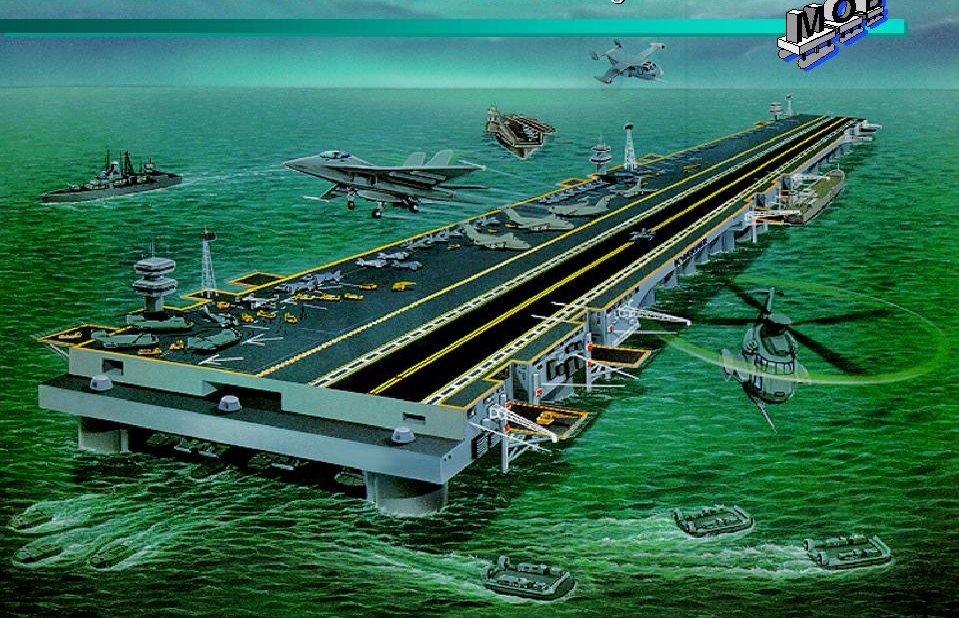 Regular forum denizens are aware that for a while now we have provided an unofficial “service release” update to v1.07, available at the MatrixGames forum. This update has now been fleshed out considerably and become worthy of a new official update, designated v1.08.
Regular forum denizens are aware that for a while now we have provided an unofficial “service release” update to v1.07, available at the MatrixGames forum. This update has now been fleshed out considerably and become worthy of a new official update, designated v1.08.
And the first Release Candidate of this new update is now available on the Matrix forum.
Some of the big new items:
- New weapon types: Anti-torpedo torpedoes (this used to be science fiction but now they’re entering service), erhanced fragmentation warheads (aka “superfrag”), and contact explosive – sabotage & suicide subtypes (think USS Cole).
- New ship type: Mobile Offshore Base (aka “Battle Island”, aka how to make a CVN captain feel puny). Contrary to aircraft carriers, a MOB can also operate land-based aircraft (e.g. large transports).
- Selectable display of weapon engagement arcs.
- Improvements on sub AI & battery-recharge logic.
- Side-firing gunships now maneuver properly (and huge fun to watch).
- Lots of UNREP fixes & tweaks.
- Numerous tweaks to sensor models (speed-dependent IR signatures, no-scan-while-track limits on older radars etc.), snap-up/down restrictions on anti-air weapons and and ASW torpedo logic.
- Several UI and simulation speed improvements.
Plus a mile-long list of fixes, tweaks and of course countless database additions as you’ve come to expect from the crazy folks at WarfareSims.
Give it a go and let us know what we can do even better. Your feedback matters!
Summer scenario storm! Fourteen new Command scenarios available
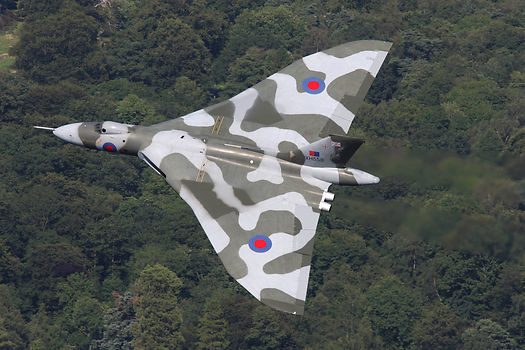 The summer is upon us, and Command’s creative community is in full swing. Miguel Molina has posted a new revision of the community scenario pack, featuring a blistering fourteen new scenarios!
The summer is upon us, and Command’s creative community is in full swing. Miguel Molina has posted a new revision of the community scenario pack, featuring a blistering fourteen new scenarios!
- Busy Day in Burundi, 1976: Widespread unrest has followed a sudden coup in the country, with rebel groups gaining control of military equipment. With the toll of civilian deaths increasing, an international coalition led by France and the United Kingdom has positioned itself to take action. SAS teams on the ground must cooperate with air support to hunt down rebel strongpoints.
- Homerun, 1956: From 1952 onwards, RB-47 recon variants of the new B-47 Stratojet bomber started overflying the north of the Soviet Union in photo-recon and ELINT missions. By the mid-50s these flights were getting to be really hazardous as Soviet air defences were becoming both more capable and more aggressive. This is such a mission.
- Indonesian War #1 – Convoy Lion, 1995: In the 1990s Indonesia became increasingly aggressive about protecting its territorial rights, hunting down rebels in various provinces etc. Its occupation of Timor has been marked by increasing reports of violence and oppression. This includes an effective blockade of the island, which has led to shortages of food and medicine. The British Parliament voted to support “all reasonable efforts including the use of force to compel Indonesia to allow humanitarian aid to reach Timor.” The Australian government passed a similar measure the same day and Australia has been given operational control of the mission. A hastily organized convoy escorted by British and Australian naval units is now en route to the island of Timor. Indonesia has responded by stating that attempts to enter its territorial waters without permission will be treated as an act of war.
- Indonesian War #2 – Air Battle Over Java, 1995: Indonesia attempted to stop the joint Australian-UK convoy and hostilities took place on April 17, 1995. As a result, the British and Australian governments have decided to eliminate Indonesia’s ability to attempt further attacks against their ships and aircraft. The first and perhaps most important step in achieving this goal is to cripple Indonesia’s air force.
- Indonesian War #3 – Spartan Goes Hunting, 1995: After inflicting serious losses on Indonesia’s navy and air force, the governments of Australia and the United Kingdom have decided to employ commerce raiding to put economic pressure on Indonesia and force them to sue for peace. As part of this, the nuclear submarine HMS Spartan been given a free hand.
- Better Bullets (AMRAAM), 1987: With development of the AMRAAM missile undergoing the all-too-common teething problems, an exercise is being held to justify its importance. This is an exercise presenting the possibility of a hostile air power using a similar missile against the USAF. The opponent is armed with advanced AMRAAMs and crewed by expert pilots, so expect a brutally difficult fight.
- Better Bullets (SARH), 1987: With development of the AMRAAM missile undergoing the all-too-common teething problems, an exercise is being held to justify its importance. In this variant the opponent is armed with SARH weapons only (like the AIM-7 and AA-10) and crewed by expert pilots, so expect a difficult fight.
- Kuril Islands, 1999: Japan has established a major seabed-mining operation 20 nmi west of the island of Kunashiri. Hostilities between Japanese Maritime Defense Force (JMDF) and Russian forces have broken out over economic rights concerning the Kuril Islands. Russian Naval forces have established a formidable blockading surface and submarine units also supported by several squadrons of long range strike aircraft based out of airfields. You are in tactical control of all U.S. forces which include USAF land-based aircraft and JMDF forces in the area. You must defend your forces against attack and take control of as much territory as possible, until a United Nations settlement can be negotiated.
- Offensive CAP Belarus, 2015: Backed by Russia, Belarus has invaded Poland’s eastern provinces in force. Further Russian forces will be brought into action when the Belorusian Army’s offensive stalls. The USAF 555th Fighter Squadron (555 FS, 24 F-16C) and the Polish 40th Tactical Squadron (40.ELT, 24 Su-22M4) have been tasked to strike key logistic and support sites in Belarus to complicate enemy reinforcement efforts. They will be supported by a NATO E-3 Sentry and four EA-18Gs from the US Navy’s VAQ-139. Your task is to provide air cover for the operation using the 18 Typhoon FGR.4s of 1 Sqdn RAF. Enemy air activity is expected to be heavy.
- Bay Of Bengal, 1999: India has mobilized amphibious assault forces again Sri Lanka. The US embassy in Sri Lanka is urging all Americans to leave the country. The Indian CVBG is operating in the Gulf of Mannar. Russia and China have deployed naval bombers to India. Indian submarine activity in the region is significant. Sri Lanka fears Indian military buildup in preparation to final invasion force and collapse of the government. The United Nations has requested that a U.S. CVBG be sent to the area to stabilize the region. All Indian naval forces are considered hostile.
- Operation Black Buck 1, 1982: The Falklands conflict begins in earnest. As the Royal Navy Task Force arrives to enforce a 200nm exclusion zone around the islands, RAF Vulcans fly the longest-range bombing mission in history to date, to fire the opening shots of the war.
- April Storm #1 – The New Eastern Front, 1996: Boris Yeltsin was removed from power in late 1995. His replacement, a former general in the Red Army, has set an aggressive tone for the new Russia. In the first week of April 1996, Russia and Belarus invaded parts of eastern Poland. About one quarter of Poland is now under Russian control. The UN has been unable to effect any change. NATO has warned Russia that the current situation is intolerable and that it must withdraw from Poland or face serious consequences.
- French Forces in the Gulf of Sidra, 1981: France frequently skirmished with Libya in various flashpoints in northern Africa (e.g. Chad) during the 1980s. In this hypothetical scenario, Libya raises the stakes by directly attacking a French naval task group in the Gulf of Sidra.
- Boston’s Brawl, 1963: Hostilities broke out between NATO and the Warsaw Pact in late 1963. A small force centered on the missile cruiser Boston is tasked with prosecuting all WP forces in its patrol area, between the Falkland islands and Argentina.
As always, the community scenario pack is available for download at the WarfareSims download section: http://www.warfaresims.com/?page_id=1876
With the new additions, the number of total released scenarios now stands at 262!
Ukraine rebels, flattops and battlewagons, ISIS-hunting and Desert Storm nukes: Nine new Command scenarios available
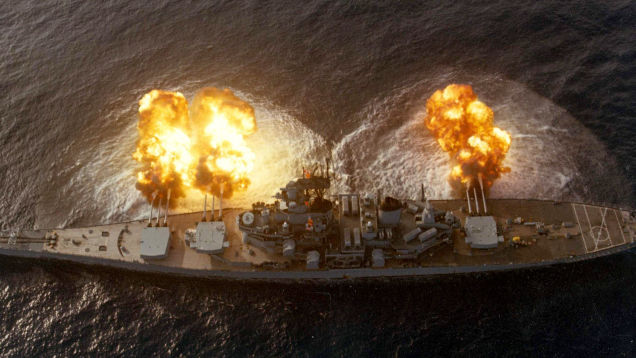 Miguel Molina has posted a new revision of the Command community scenario pack, the compendium of Command scenarios crafted by the user community. The new release contains nine brand-new scenarios:
Miguel Molina has posted a new revision of the Command community scenario pack, the compendium of Command scenarios crafted by the user community. The new release contains nine brand-new scenarios:
- They Came From The Museum, 2015: Soviet/Russian tactical aircraft have a long history of ‘inexplicably’ showing up in various conflicts under the hands of ‘rebel’, ‘advisor’ and otherwise non-official pilots. This scenario assumes that the “little green men” in Ukraine take this strong tradition one step further and piece together a hodgepodge air force from various odd sources, including a number of exhibits from the Luhansk Air Museum. How will these Cold War cast-offs and their mysterious pilots fare against Ukrainian air defences?
- The Battle of Langkawi, 1973: By 1973, the communist insurgency that erupted in Malaysia has taken control of most of the state of Kedah. They have captured a number of artillery pieces, armored cars, and other military equipment, including a number of aircraft. An international coalition, led by the UK, and including forces from Australia, New Zealand, and Singapore are assisting Malaysia in its fight against the insurgents. However, the Soviet Union, China, India, North Korea, and Cuba have all recognized the self-declared People’s Republic of Kedah – and will actively assist it against blockades of its ports in the Kedah region, including the island of Langkawi.
- The Clash Of Titans II, 2018: India started the year with intensive naval activity in both Indian Ocean and Arabian sea. The brief Indian incursion into littoral waters of French island Reunion was condemned by French diplomacy. Further diplomatic tension eventually resulted in a double embargo between France and India. A week ago, the French CVBG led by the Charles De Gaulle CV left Toulon naval base and headed to Suez. INS Vikramaditya with its escorts was ordered to head towards the Gulf Of Aden. Politics will continue by other means from now on.
- Closing the Kurile Gap (The War That Never Was) – US, 1989: The Soviet Pacific Fleet would have faced a difficult problem with geography if the Cold War ever went hot. Their largest base, Vladivostok, faces the Sea of Japan. Any units transiting to the Pacific either need to pass through the narrow Tsushima Strait, flanked by likely-hostile South Korea and Japan, or they need to head northwest and pass through the disputed Kurile Islands. The other major Soviet naval base, Petropavlovsk, opens to the Pacific. However, it is located at the end of the remote Kamchatka peninsula and has long, vulnerable supply lines. This scenario examines the Soviet Pacific Fleet’s ability to break out through the Kuriles, and the US Navy’s role in plugging the gap.
- Closing the Kurile Gap (The War That Never Was) – USSR, 1989: The Soviet side of the above scenario.
- Those Who Face Death, 2014: In this hypothetical “from the headlines” scenario ISIS has captured much more intact military equipment from the Iraqi and Syrian Armies; they also have the technical capabilities to put it to use. Expect to see American, Iraqi, Syrian, Iranian military equipment. You are hunting a convoy of artillery and APCs heading to Mosul from the south before turning west towards the Yazidi camp at Mount Sinjar. You will need to airdrop supplies and parachutists to the Yazidi camp to achieve success. You are sending British and American aircraft from bases in Turkey, Kuwait, and Cyprus.
- Log Bridge, 1989: World War III has been raging. The fighting over Keflavik has been so heavy that what remains of the airfield, currently held by NATO, is unusable. At the same time, the fighting in Europe has pl aced demands upon available resources that preclude either side sending long range aircraft to attack or defend Iceland. The fate of Iceland will therefore be decided by a decisive surface battle. The big guns are coming out – literally.
- Nuclear Storm, 1991: Desert Storm is underway, and the unthinkable has happened: Saddam’s forces have launched chemical attacks on coalition troops, with significant casualties. Now a retaliation is in order – to illustrate within limits that some lines are not to be crossed.
- No Time for Mischief, 1995: Mischief Reef is in a disputed area of the South China Sea. In 1995, China angered the Philippines by occupying the reef and constructing structures on it, ostensibly as shelters for fishermen. In history, the matter did not escalate into violent confrontation. This scenario assumes the government of the Philippines has taken a more aggressive approach, assuming that if worst comes to worst they will be backed up by the United States.
As always, the community scenario pack is available for download at the WarfareSims download section: http://www.warfaresims.com/?page_id=1876





